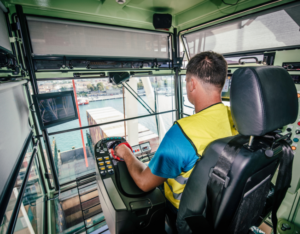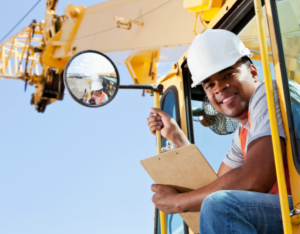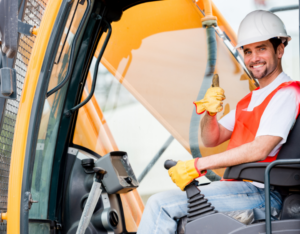Introduction
Heavy lifting machinery plays a crucial role in various industries, especially in construction. With the need to lift and transport heavy objects, equipment such as boom trucks and cranes have become indispensable tools. This blog post aims to delve into the comparison between these two types of machinery, providing readers with a comprehensive understanding of their distinct features and applications.
When it comes to heavy lifting, it is essential to choose the right equipment that caters to specific needs. Both boom trucks and cranes offer unique capabilities, making it crucial to consider their advantages and limitations. By examining their features, functionalities, and potential applications, readers will gain valuable insights to determine which option is best suited for their requirements.
Whether it is maneuverability, reach, lifting capacity, or versatility, boom trucks and cranes possess distinct characteristics that set them apart. Understanding these differences will enable individuals and businesses to make informed decisions based on their specific lifting needs. Stay tuned to gain a thorough understanding of the differences between boom trucks and cranes, ultimately aiding in selecting the most suitable machinery for your industry.
Defining Boom Trucks and Cranes
A boom truck is a versatile, specialized vehicle that combines the functionalities of a crane and a truck. It is equipped with a hydraulic crane, typically mounted on the bed of a truck, which has a telescopic or knuckle-boom design. This design allows the crane to extend and retract, providing a significant reach and flexibility for lifting and carrying heavy loads. Boom trucks are commonly used in various industries such as construction, telecommunications, utility work, tree removal, and signage installation.
On the other hand, cranes are a broad category of machines designed to lift, lower, and move heavy objects using a system of pulleys and cables. There are different types of cranes, including tower cranes, mobile cranes, and crawler cranes. Tower cranes are used on construction sites to lift and move heavy materials to great heights. Mobile cranes are versatile and can be transported to different locations, making them suitable for various job sites. Crawler cranes, also known as tracked cranes, have continuous tracks that allow them to navigate uneven terrain. They are often used in heavy construction projects, especially when stability and mobility are critical.
A boom truck is a vehicle with a mounted hydraulic crane, while cranes encompass various types designed for different purposes. The choice between a boom truck and a crane depends on the specific needs of the project, such as the required reach, mobility, and lifting capacity.
Key Differences
Boom trucks and cranes are both heavy-duty machines designed to lift and move heavy loads. However, these two machines have key differences that make each of them suitable for specific tasks. Understanding these differences is crucial for individuals or businesses looking to invest in lifting equipment. In this article, we will explore the main distinctions between boom trucks and cranes, enabling readers to make an informed decision based on their specific needs.
One of the primary differences between boom trucks and cranes lies in their mobility. Boom trucks, as the name suggests, are trucks with an attached boom crane. This unique feature allows them to be driven to different work locations easily. On the other hand, cranes are stationary machines, often mounted on a fixed base or attached to a building or structure. The immobility of cranes restricts their use to a specific location. Therefore, if the lifting project requires frequent relocation and flexibility, a boom truck would be the better option.
The next important factor to consider is the lifting capacity. Boom trucks generally have lower lifting capacities compared to cranes. The size and design of the boom truck’s chassis limit the maximum weight it can handle. Cranes, on the other hand, are purpose-built machines with higher lifting capacities. They are engineered to support and lift exceptionally heavy loads, making them suitable for large-scale construction projects and industrial applications. If the lifting requirements involve heavy and massive objects, a crane would be the ideal choice.
In terms of reach and height, cranes outperform boom trucks. With their extendable booms and jibs, cranes can reach great heights and maneuver over obstacles easily. This makes them highly effective for construction projects that require lifting materials to tall buildings or structures. Boom trucks, while they can extend their booms to a certain extent, have limitations in terms of height and reach. If the lifting task demands access to challenging locations, cranes are the go-to option.
Another key difference is the equipment’s versatility. Boom trucks are not solely designed for lifting and moving loads; they also have the added advantage of being able to transport equipment and personnel to work sites. This makes them multi-purpose machines, suitable for tasks beyond lifting alone. Cranes, on the other hand, are specialized machines primarily used for lifting heavy objects. If the project requires a machine that can perform various tasks simultaneously, a boom truck would be the better choice.
Lastly, cost is an essential factor to consider when deciding between a boom truck and a crane. Boom trucks are generally more cost-effective compared to cranes. Their versatility, mobility, and lower lifting capacities contribute to their affordability. Cranes, due to their specialized engineering, higher lifting capacities, and extended reach capabilities, tend to be more expensive. Therefore, budget constraints can play a significant role in determining the best option.
Understanding the key differences between boom trucks and cranes is crucial for choosing the right lifting equipment for specific needs. Boom trucks offer enhanced mobility, versatility, and cost-effectiveness, making them suitable for a wide range of projects. Cranes, on the other hand, excel in lifting heavy loads, reaching great heights, and maneuvering over obstacles. By evaluating factors such as mobility, lifting capacity, reach, versatility, and cost, individuals and businesses can make an informed decision that aligns with their requirements.
Size and Mobility
One of the key distinctions between boom trucks and cranes lies in their size and mobility. Boom trucks are typically much more compact compared to many cranes. They are designed with a smaller footprint, making them a favorable choice for projects that have limited space or require maneuvering in tight areas.
In terms of mobility, boom trucks take the lead. Their compact size allows for easier transportation to and from job sites. They can navigate through narrow roads and congested areas, ensuring increased accessibility and efficiency. Moreover, boom trucks often feature hydraulic outriggers, stabilizing the vehicle for safe operations regardless of the terrain.
On the other hand, cranes are known for their towering structures and larger dimensions. While they offer significant lifting capacities, their size can pose challenges in certain environments. Limited workspace or restricted access may prevent cranes from being deployed, compromising productivity and potentially requiring additional time and resources to complete a task.
Ultimately, the choice between boom trucks and cranes depends on the specific needs of a project. If compactness and mobile operations are crucial, boom trucks offer a more suitable solution. However, when maximum lifting capacity outweighs size constraints, cranes become the clear choice. Assessing the available workspace and understanding the nature of the job are essential for determining which option will deliver the best results.
Lifting Capacity
When comparing boom trucks and cranes, one crucial factor to consider is their lifting capacity. Cranes typically have a significantly higher lifting capacity than boom trucks, making them more suitable for handling heavy loads.
Cranes are renowned for their impressive lifting capabilities, with the ability to handle immense weights. Depending on the type and model, cranes can lift loads ranging from a few tons to hundreds of tons. They are often used in construction sites, shipyards, and other heavy-duty industries where massive objects need to be raised and moved.
On the other hand, boom trucks, while also equipped with a hydraulic crane, have a relatively lower lifting capacity compared to traditional cranes. These trucks are designed with a boom arm attached to the back, allowing for versatility and mobility. Boom trucks are commonly used in lighter construction projects, utility work, and maintenance tasks that require lifting loads that are not as heavy as those handled by cranes.
If your project involves lifting heavy loads, cranes are the more suitable option due to their higher lifting capacity. However, for lighter tasks that require flexibility and mobility, boom trucks can still provide the necessary lifting capabilities. Consider the specific needs of your project when deciding between the two options.
Setup Time
When it comes to setup time, boom trucks hold a clear advantage over traditional cranes. Boom trucks are designed to be quick and easy to set up, allowing for efficient operation in a time-sensitive environment.
One key factor contributing to the quick setup time of boom trucks is their design as a self-contained unit. Boom trucks are equipped with an extendable boom that can be easily maneuvered and adjusted. This eliminates the need for additional components or support structures, saving valuable time during the setup process.
Furthermore, boom trucks are typically mounted on a chassis, which means they can be driven to the desired location rather than being transported separately like cranes. This maximizes their mobility and flexibility, allowing them to be set up at various job sites without the need for complex logistical planning.
In contrast, cranes often require more extensive setup procedures. They may need to be transported to the site on a separate truck or trailer, which adds an extra step to the setup process. Once on-site, cranes usually need outriggers or outrigger pads to provide stability and support. These additional components require careful positioning and adjustment, further prolonging the setup time.
Overall, boom trucks excel in their ability to be quickly set up and made operational, making them an ideal choice for time-sensitive projects or industries where efficiency is paramount.
Maneuverability
When it comes to maneuverability, boom trucks undoubtedly have the upper hand over larger cranes. Their compact design and agile nature allow them to navigate even the tightest job sites with ease.
Unlike cranes, which require vast amounts of space to operate efficiently, boom trucks can maneuver in confined areas without compromising their functionality. This makes them ideal for congested urban areas or construction sites with limited space. With a boom truck, operators can navigate around obstacles such as buildings or other structures effortlessly, ensuring that the work gets done without any impediments.
Furthermore, boom trucks offer a significant advantage in terms of their ability to access elevated areas and maneuver over uneven terrain. Their telescopic and articulating booms enable them to reach heights and positions that may be challenging for larger cranes. This flexibility is particularly advantageous in construction projects where reaching difficult-to-access locations is crucial.
The superior maneuverability of boom trucks enhances not only productivity but also safety on the job site. Their increased mobility allows for efficient movement of materials and equipment, reducing the risk of accidents and potential damage to surrounding structures.
In summary, if maneuverability is a key consideration for your specific needs, boom trucks are the ideal choice. Their compact design, agile nature, and ability to navigate tight job sites make them a superior option compared to larger cranes.
Pros and Cons of Boom Trucks
Boom trucks, also known as truck-mounted cranes, have become popular in the construction industry due to their significant advantages. One of the main advantages of boom trucks is their mobility. Unlike traditional cranes, boom trucks can be easily driven to any job site, making them highly convenient for various small to medium projects. Their ability to navigate through tight spaces is particularly beneficial in urban areas, where space constraints are common.
Ease of use is another notable advantage of boom trucks. With built-in controls, operators can efficiently maneuver the crane and operate the boom, eliminating the need for additional equipment or personnel. This results in time and cost savings, making boom trucks an attractive option for many construction companies.
Versatility is also a key advantage of boom trucks. These cranes come with different attachments, such as buckets or grapples, allowing them to perform a wider range of tasks beyond lifting. Whether it be loading materials onto rooftops or trimming trees, boom trucks prove invaluable due to their adaptability.
However, boom trucks do have their limitations. One significant disadvantage is their lower lifting capacity and reach compared to larger cranes. While they are ideal for small to medium projects, boom trucks may not be suitable for extremely heavy or large-scale construction tasks. Additionally, their reach may be limited, especially when compared to tower cranes or specialty cranes designed for high-rise buildings.
Boom trucks offer numerous advantages, including mobility, ease of use, and versatility for small to medium projects. However, their limited lifting capacity and reach may restrict their usage in certain heavy-duty applications. Ultimately, the choice between boom trucks and cranes depends on the specific needs of the project at hand.

Pros and Cons of Cranes
Cranes are powerful machines that have several advantages in various industries. Their main advantage is their high lifting capacity, which allows them to handle heavy loads and work on large-scale projects. This makes them ideal for construction sites, where they can lift and move heavy materials like steel beams, concrete, and pre-fabricated elements.
Another advantage of cranes is their stability. They are designed to lift and transport heavy loads while maintaining a stable position, ensuring the safety of both the operators and the surrounding environment. This stability is crucial when working in challenging conditions, such as high winds or uneven terrain.
However, cranes also have some disadvantages that should be considered. One major drawback is their need for significant setup space. Cranes require a large area to assemble and stabilize their outriggers, limiting their usability in areas with limited space or congested urban environments.
Additionally, cranes tend to be more costly compared to other lifting equipment. They have a higher upfront investment and ongoing maintenance costs, which may not be feasible for smaller projects or businesses with limited budgets. Moreover, cranes are less flexible in terms of movement. Once set up, they can only move along a fixed path, restricting their ability to reach specific areas on a job site.
Overall, while cranes offer significant lifting capacity and stability, they may not be the most suitable option for every situation due to their space requirements, higher costs, and limited movement flexibility.

Suitable Applications for Each
Boom Trucks:
Boom trucks are highly versatile and widely used in various industries for their specific applications. They are ideally suited for tasks involving electrical utility work, such as repairing power lines or installing electrical fixtures. Their flexible boom extensions allow for precise maneuverability, making them invaluable in navigating narrow spaces and reaching challenging heights, which is particularly useful in urban areas with limited access.
In addition to electrical utility work, boom trucks find great utility in light construction projects. Their ability to lift and transport heavy loads, combined with their maneuverability, makes them perfect for tasks like lifting trusses, setting roof trusses, or handling materials on construction sites. They also offer exceptional utility in landscaping tasks such as tree trimming and placement of heavy plants or rocks.
Cranes:
Cranes are the go-to choice for scenarios that demand heavy lifting and extensive reach. High-rise construction projects, for instance, heavily rely on cranes to lift and place construction materials at significant heights where boom trucks may not suffice. Their immense lifting capacity and height capabilities make them indispensable for handling heavy industrial machinery, structural steel, and pre-cast concrete elements in large-scale construction projects.
Moreover, major infrastructure development projects, such as building bridges or erecting large structures, can benefit immensely from the use of cranes. Their ability to handle massive loads and their specialized attachments like pile drivers allow for efficient foundation work and increased construction speed.
Boom trucks excel in tasks requiring maneuverability and reaching challenging heights, making them invaluable in electrical utility work, light construction, and landscaping. On the other hand, cranes are best suited for heavy lifting and extensive reach, making them indispensable in high-rise construction, heavy industrial projects, and major infrastructure development. Understanding the specific requirements of one’s project will aid in selecting the most suitable equipment for optimal results.
Choosing the Right Equipment for Your Project
When it comes to choosing the right equipment for your project, whether it be a boom truck or a crane, there are several factors to consider. First and foremost, you need to assess your project needs. Determine the weight and size of the objects that need to be lifted or moved. If you are dealing with smaller loads and require mobility, a boom truck might be the right option for you. On the other hand, if you need to lift heavy objects and require greater height and reach, a crane might be more suitable.
Another important factor to consider is your budget. Boom trucks are generally more affordable compared to cranes. If you have budget constraints, a boom truck might be a more cost-effective choice.
Site constraints also play a significant role in equipment selection. For projects with limited space or difficult access, a boom truck with its maneuverability and compactness can be advantageous. However, if the site allows for it and the project requires heavy lifting at great heights, a crane may be the better option.
When deciding between a boom truck and a crane, carefully evaluate your project needs, budget, and site constraints. This will help you make an informed decision and choose the equipment that best suits your specific requirements.
Conclusion
Boom trucks and cranes offer distinct advantages and applications. Boom trucks are versatile and offer mobility and reach for various construction projects. They are perfect for tasks that require quick and efficient lifting, such as setting up billboards or repairing power lines. Cranes, on the other hand, provide heavy lifting capabilities, making them suitable for large-scale projects and industries such as oil and gas, bridge construction, and port operations.
When deciding between boom trucks and cranes, it is essential to carefully consider the specific needs of your project. Evaluate the weight and size of the loads you will be handling, the required reach and mobility, and the nature of the environment in which the equipment will be operating. Additionally, factors such as project duration, cost-effectiveness, and available space should be taken into account.
By thoroughly assessing these factors, you can determine whether a boom truck or a crane is the best option for your needs. Consulting with professionals in the industry can also provide valuable insights and guidance. Ultimately, choosing the right equipment will ensure the success and efficiency of your project, saving time, money, and resources.







